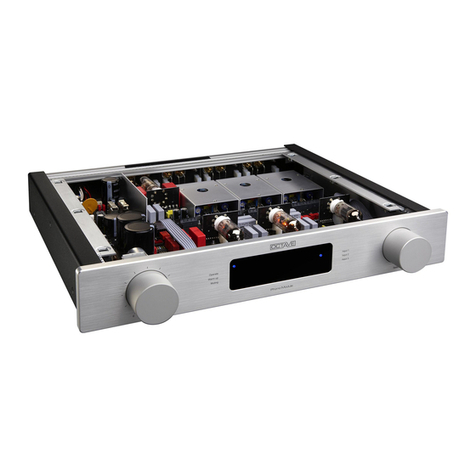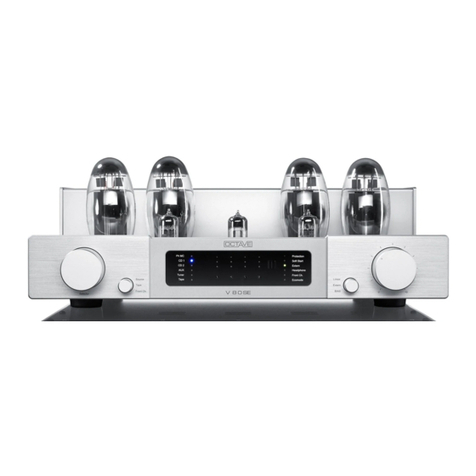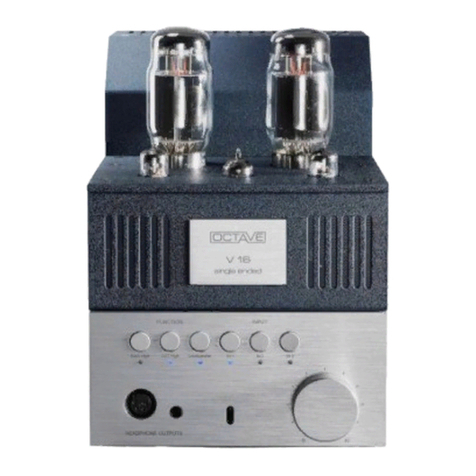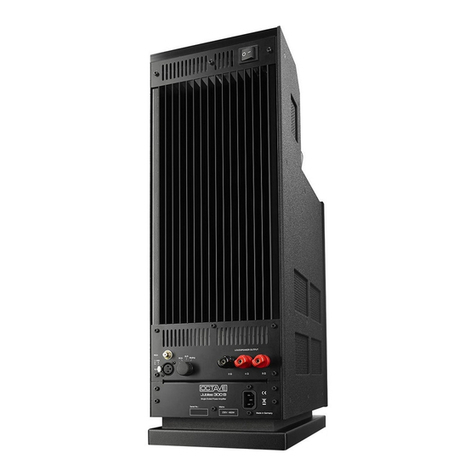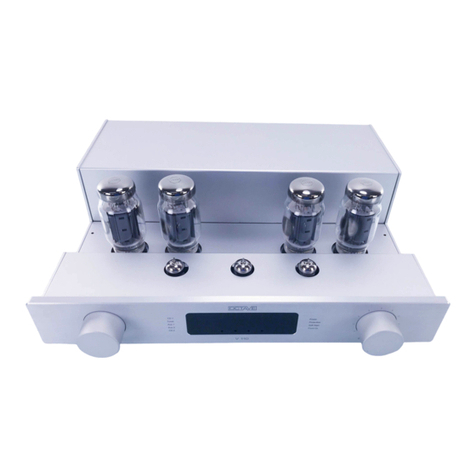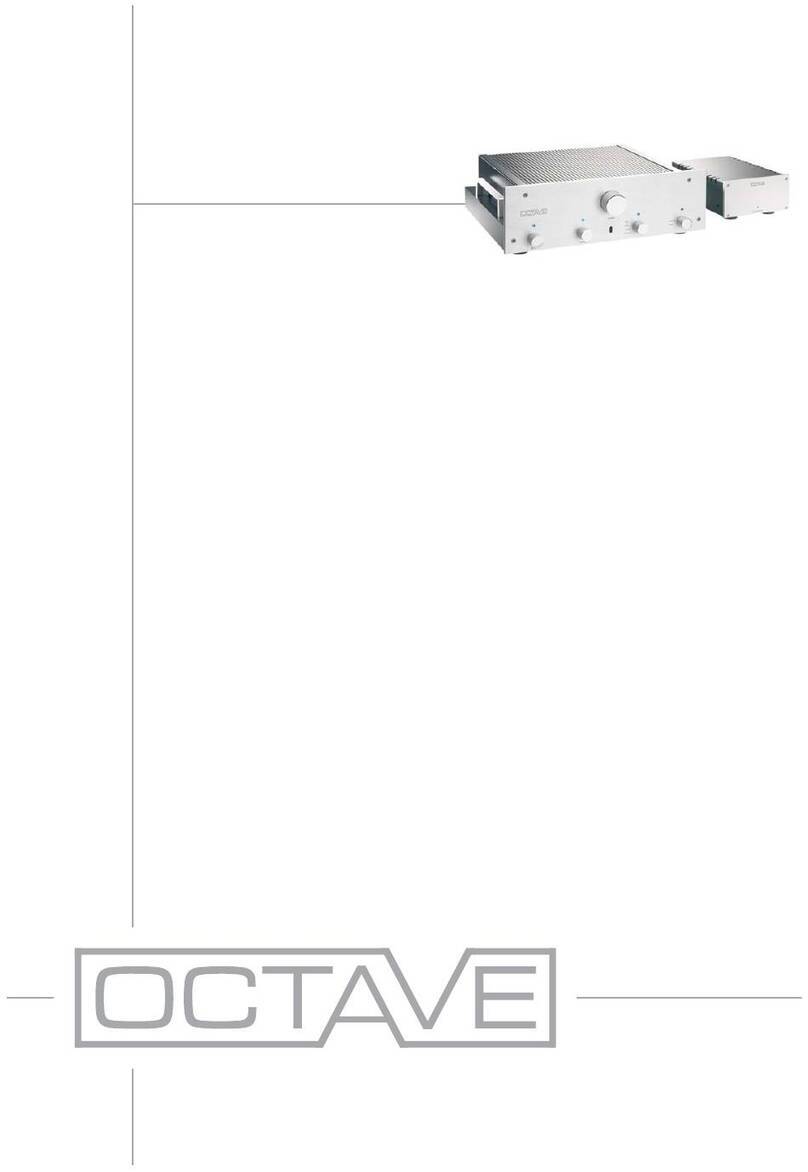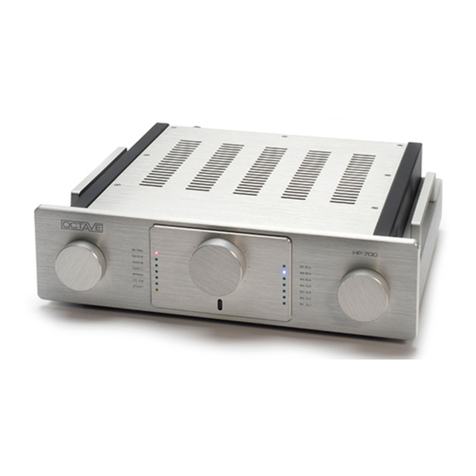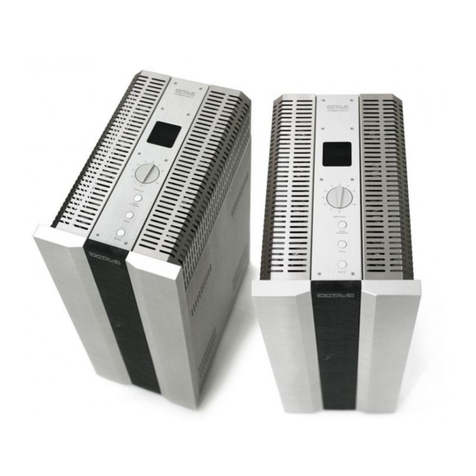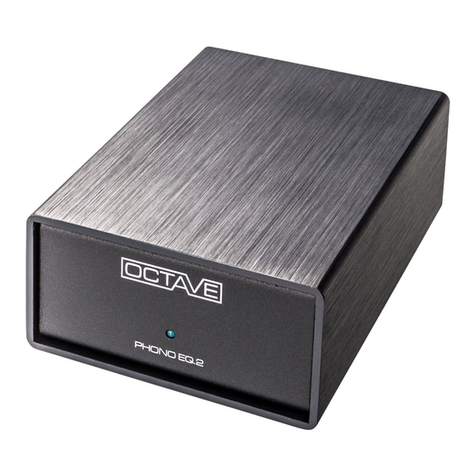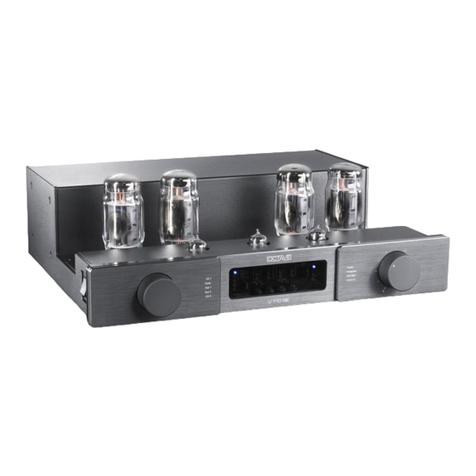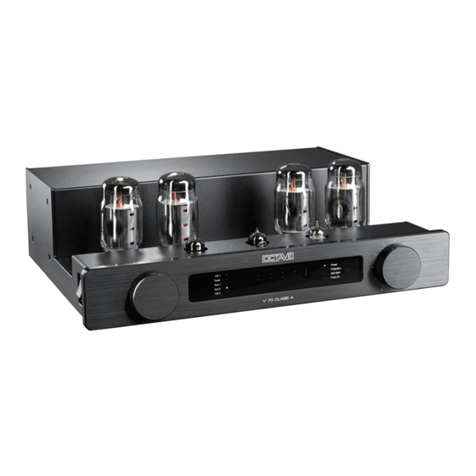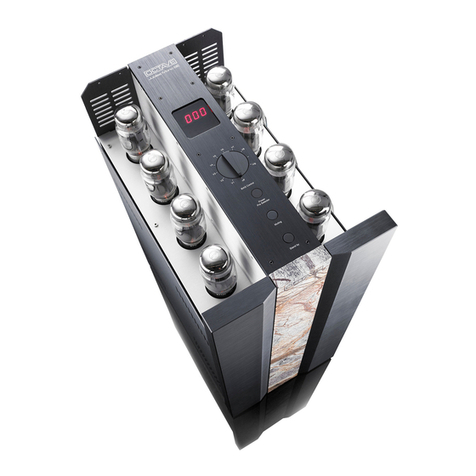7
1. DESCRIPTION OF THE RE 290
The new Octave RE 290 stereo power amplifier is a push-pull pentode design delivering 2 x 100 W
RMS output power (into 4 ohms loads). As with all Octave models, all research and development
(R&D) and production has been conducted exclusively in-house, and the amplifier is
comprehensively safeguarded against user error and parts wear – including catastrophic power
tube failure.
The RE 290 is based on the stable and reliable electronic circuits of the RE 280 MKII model, while
incorporating the benefits of the recently-developed KT120 power tube. The KT120 allows an
output power of more than 100 W via two tubes in push-pull mode, while its current capacity is
higher compared to the classic KT88 tube designs. Increased stability with difficult, low impedance
speakers is achieved through the increased bandwidth and OCTAVE’s specially designed output
and mains transformers.
BIAS Measurement
The RE 290 is fixed BIAS, and utilizes external precision BIAS trim pots and LED confirmation
which allows the user to readily monitor the output tubes and simply correct their BIAS individually
at the front panel of the unit without the need of a micrometer let alone any special knowledge or
tools – just the supplied 3 mm flat-head screwdriver.
Black Box Option
The RE 290 is fitted with a connector for the optional Octave “Black Box” capacitance modules –
available in normal and “Super” versions. The use of the Black Box or Super Black Box significantly
increases power supply capacitance to stabilize current delivery and reduce impedance interaction
of the load, thus improving dynamic range, separation, depth, soundstage size and articulation.
This enables optimizing the RE 290 in respect to the speaker, which is a tremendous benefit if the
speaker is difficult to drive.
Input Section
Unlike other designs, the RE 290 offers single ended RCA and true balanced XLR inputs with a
very high common mode rejection ratio that eliminates unwanted hum and high frequency distortion
induced in the small signal connection to the preamp.
Power Management
The RE 290 input and output tube heaters as well as its high-voltage rails are logic-controlled to
ensure that the conduction of the output tubes as well as the input stage voltages are constantly
monitored and controlled by the Power Management System, which serves to protect the vital
internal parts (tubes, rectifier, electrolytic caps, switches, etc.) against excessive turn-on current.
This increases the lifetime of not only the tubes, but all power related components as each derives
benefit through this system.
Ecomode
The Ecomode serves to reduce heat and unnecessary power consumption when the unit is
switched on but not in use. After 10 minutes without receiving signal, the RE 290 Ecomode is
activated, turning down the power. In this “sleep” mode, the RE 290 draws only 20 W Idle current.
Therefore, the unit produces no heat while it remains switched on. When a music signal is once
again detected by the RE 290, the Ecomode circuit will power the unit back on, with a short warm-
up/start-up delay (approximately 35 seconds) before the unit will operate.
The Ecomode also serves to increase the lifetime of the tubes, while providing an added benefit of
increased safety allowing the RE 290 owner a level of security against any problems when leaving
the unit switched on.


